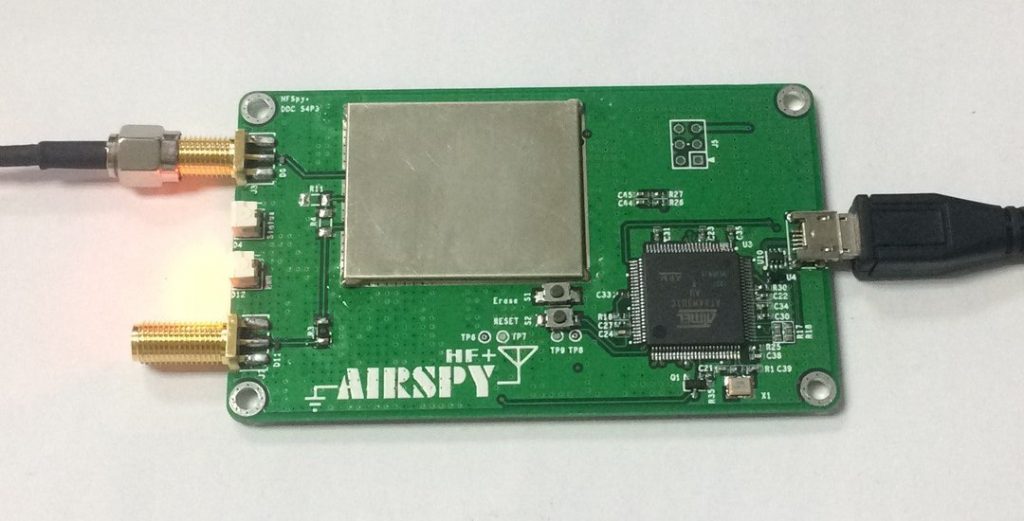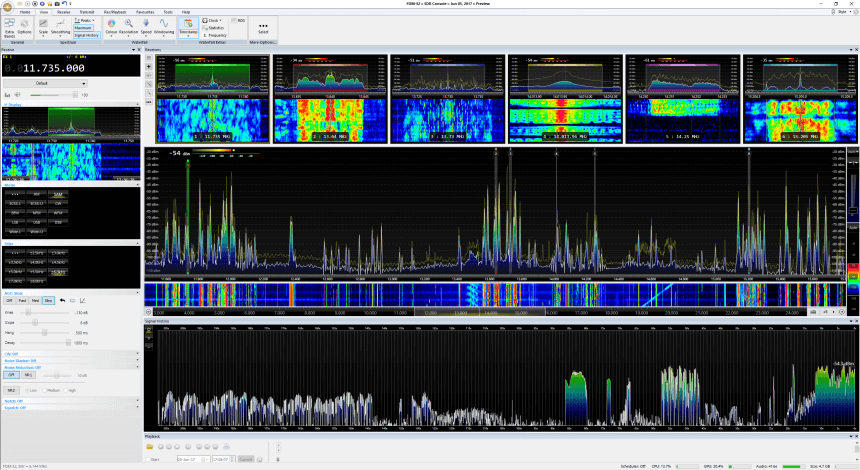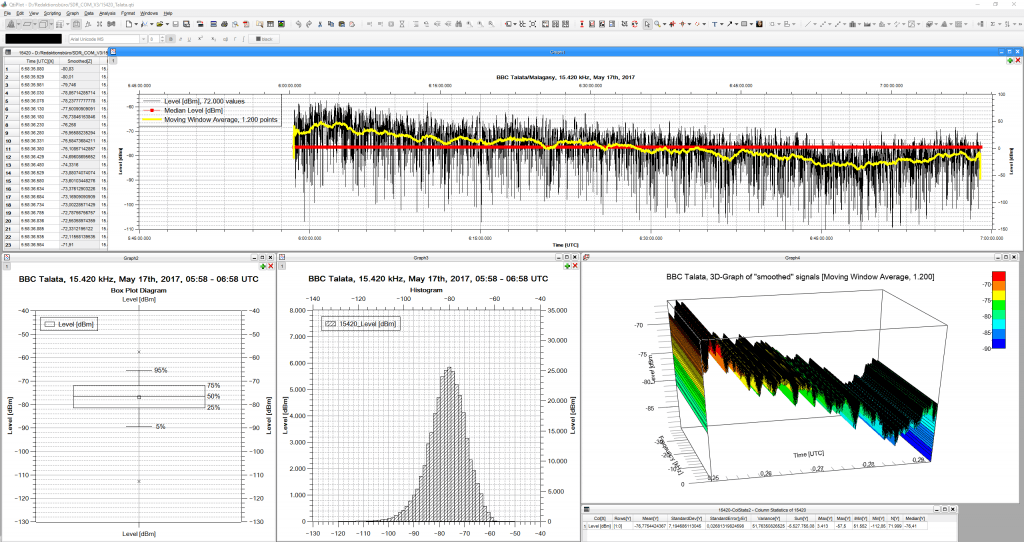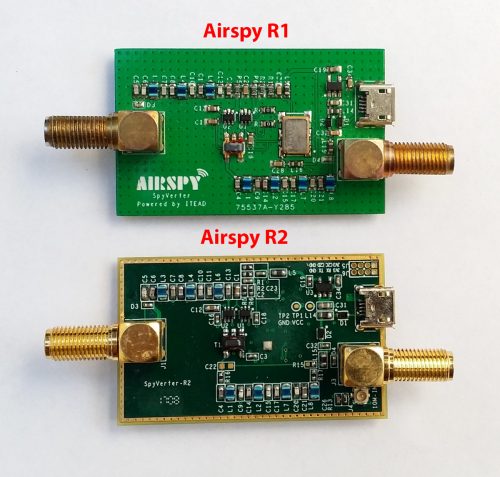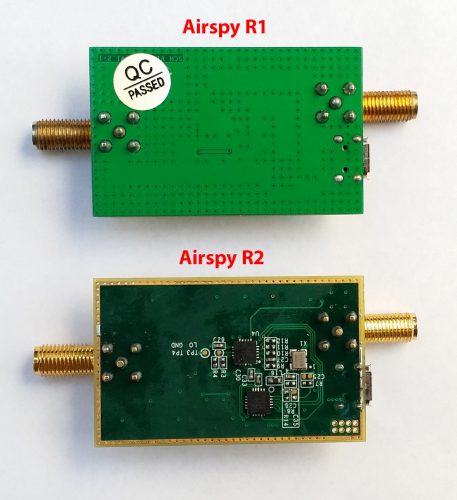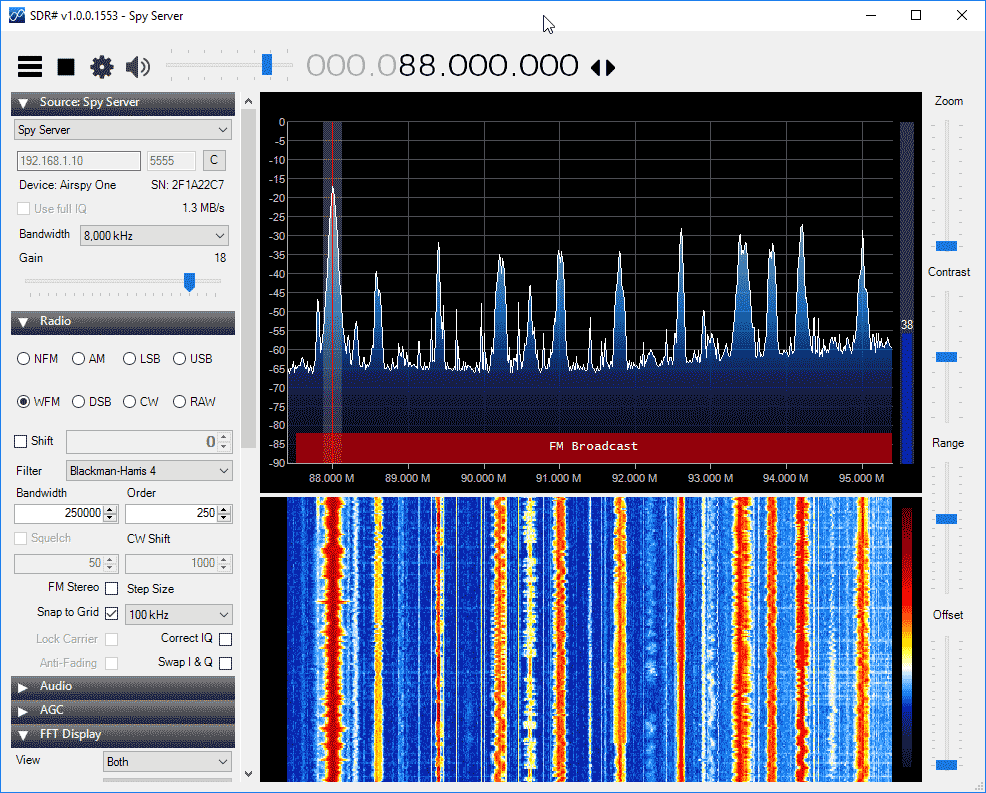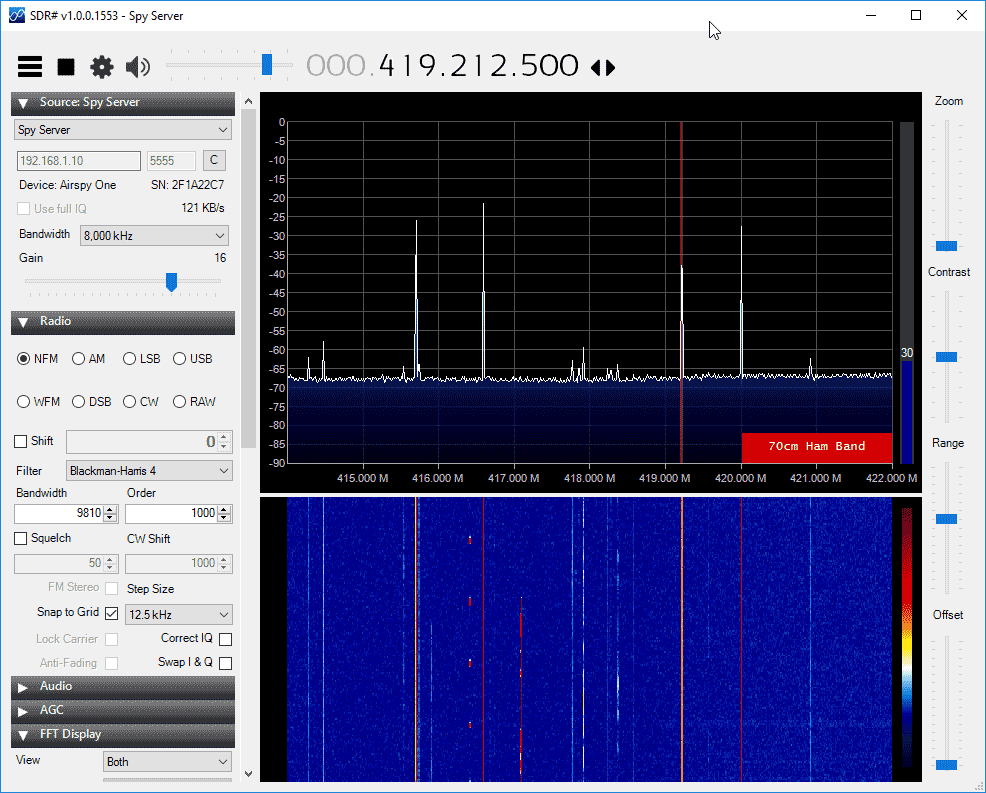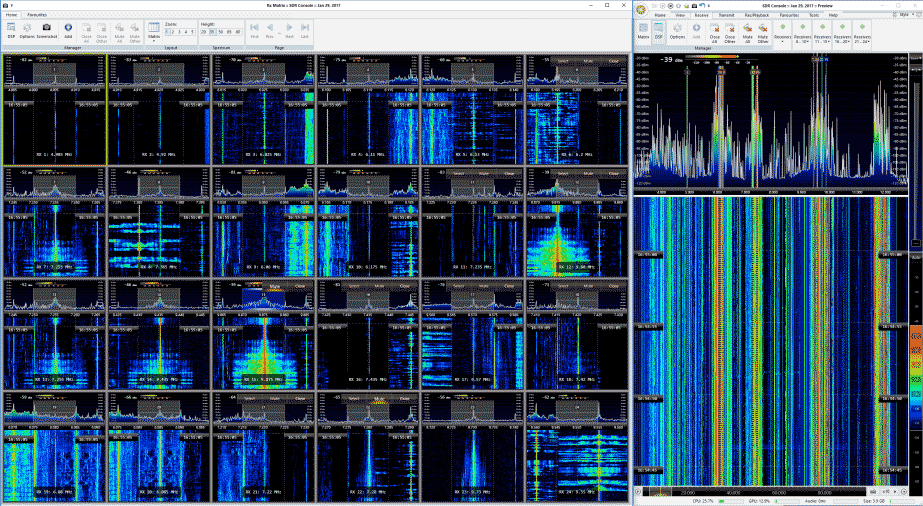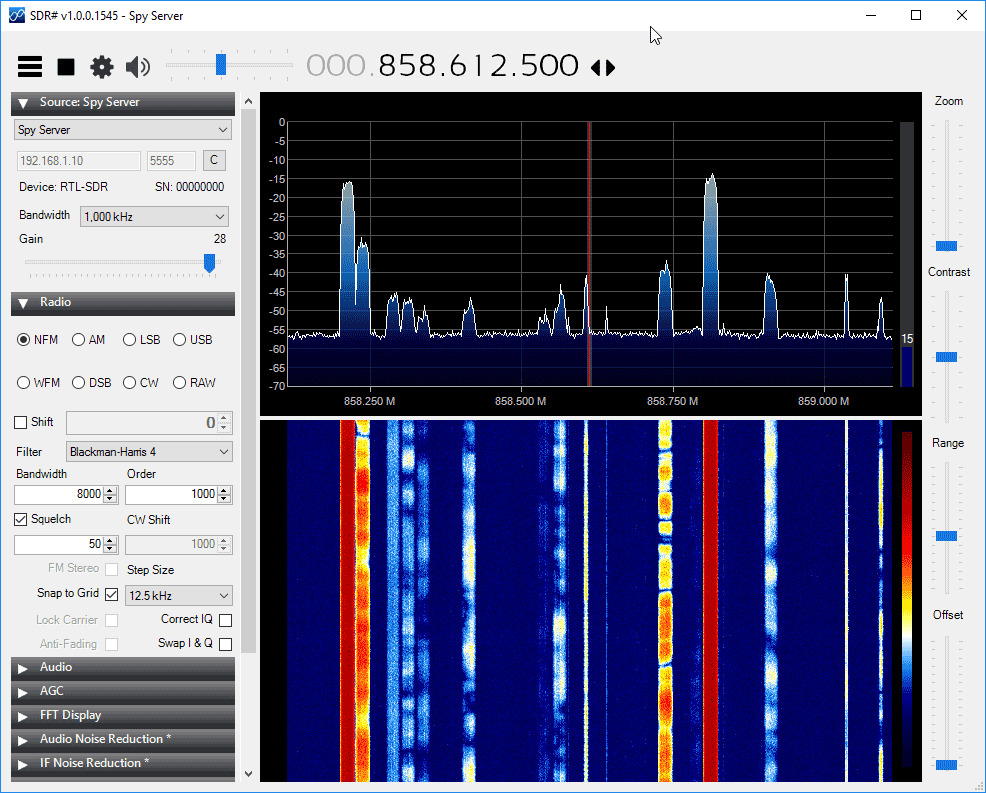Our Review of the Airspy HF+: Compared against ColibriNANO, Airspy Mini, RSP2
Over the last few months we've been posting and getting excited about the Airspy HF+, an upcoming high dynamic range HF/VHF receiver designed for DXing. The Airspy team were kind enough to supply us with an early pre-production unit for review.
Long story short, the Airspy HF+ is probably one of the best low cost SDRs we've seen for DXing or weak signal reception out there. So far few details on the availability of the HF+ have been released, but we're aware that preorders are due to start soon, and the target price is expected to be $149 USD from iTead Studio in China.
What follows is the full review and comparisons against other similarly priced SDRs. The Airspy team want us and readers to understand that our review unit is a pre-production model, and apparently already the matching and thus SNR has already been improved by about 2-4 dBs, so the sound samples we provide in the review below should sound even better with the newer revision.
Disclaimer: We received the HF+ for free in exchange for an honest review, but are not affiliated with Airspy. We've been in contact with the Airspy team who have helped clarify some points about the architecture and technology used in the design.
Introduction
The Airspy HF+ is designed to be a HF/VHF specialist receiver with a frequency range of DC to 31 MHz, and then 60 to 260 MHz. It has a maximum bandwidth of 768 kHz. So the question is then, why would you consider buying this over something like the regular Airspy R2/Mini or an SDRplay RSP2 which both have larger frequency ranges and bandwidths? You would buy the Airspy HF+ because has been designed with DXing and weak signal reception in mind. Basically the main idea behind the HF+ is to design it so that it will never overload when in the presence of really strong signals. Combined with it's high sensitivity, weak or DX signals should come in much clearer than on the other radios especially if you have strong blocking signals like broadcast AM/FM around.
Aside: What is overloading, intermodulation and dynamic range?
Basically strong signals can cause weak signals to be drowned out, making them not receivable, even though they're there at your antenna. This is called overloading or saturation. Intermodulation occurs when the SDR overloads and results in images of unwanted signals showing up all over the spectrum.
A simple analogy is to think about what happens when you are trying to drive, but there is sunstrike. The road is very hard to see because the sun is so bright and right in your eyes. The human eye does not have enough "dynamic range" to handle the situation of sunstrike. Dynamic range is a measure of how well a radio (eye) can handle strong (bright) and weak (dark) signals at the same time. The same analogy applies to radios which can struggle to 'see' weak signals if there is a very strong signal nearby on the frequency spectrum. There are a few ways to solve this:
- Filtering: Block the strong signals that you don't want using LC filters.
- Eye analogy: using your sun visor to block the sun.
- Attenuation: Reduce the strength of all signals.
- Eye analogy: using sunglasses or squint.
- Increase dynamic range: Get a better SDR with better design/technology and more bits in the ADC.
- Eye analogy: upgrade your eyes.
Technology and Architecture
The HF+ uses a typical Filter->Tuner ->ADC architecture. So it is not a direct sampling receiver like most of the more expensive SDRs. Direct sampling receivers directly sample the analogue spectrum, without the need for a tuner so they avoid losses and the intermodulation problems that usually come from the mixing stages. But there are some major cutting edge technology differences in the HF+ architecture that should make its performance even better than direct sampling receivers.
Tuner: The tuner on the HF+ is one of the first to use a "Polyphase Harmonic Rejection" architecture. Essentially this means that harmonics produced in the mixing stages are naturally rejected, making the front end filtering requirements much more relaxed. So unlike the tuners used in other SDRs, this one is extremely unlikely overload in the mixing stage.
An additional benefit to this architecture is that the mixer is very low loss, so the LNA in the tuner only needs to use low gain, giving it a very high IIP3 value. So the first LNA which is typically another point of saturation and imermodulation, is very unlikely to saturate in the HF+ design. Most of the amplification only occurs after the mixing stage with the filtered narrowband output of the tuner.
Analogue to Digital Converter (ADC): The ADC is 16-bits and uses a "Sigma Delta" (ΣΔ) design. Basically a Sigma Delta ADC has a natural filtering ability due to its narrowband nature. Instead of seeing say a 30 MHz signal, it only sees 1 - 2 MHz, thus increasing dynamic range and reducing the likelihood of out of band overload.
Digital Down-Converter (DDC): Then after the ADC is a DDC which decimates the output from the ADC, increasing the effective number of bits. The more bits the larger the resolution of the digitized RF signal, so weak signals are less likely to be lost when converted from analogue to digital.

So the block diagram flow goes like this:
A weakly filtered signal enters the tuner, is weakly amplified by the tuner LNA, mixed down to baseband and filtered to 1-2 MHz. It is then amplified and sampled with the sigma delta ADC into 16-bits. The DDC decimates the output into 18-bits which is then sent to the microcontroller and PC via USB.
The Airspy team also compiled this comparison chart for us to understand the differences in architecture between the current SDRs on the market (click to enlarge). This shows that the HF+ is a different type of design compared to other SDRs. Generally the best SDRs out the market right now are direct sampling receivers with many filter banks. The HF+ approaches the problem in a different way, and according to the specs seems to match or better the performance of heavily filtered direct sampling receivers.
Performance from the Airspy HF+ product page is stated as:
- -141.0 dBm (0.02 µV / 50 ohms) MDS Typ. at 500Hz bandwidth in HF
- -141.5 dBm MDS Typ. at 500Hz bandwidth in FM Broadcast Band (60 – 108 MHz)
- -139.5 dBm MDS Typ. at 500Hz bandwidth in VHF Aviation Band (118 – 136 MHz)
- -139 dBm MDS Typ. at 500Hz bandwidth in VHF Commercial Band (136 – 174 MHz)
- -138 dBm MDS Typ. at 500Hz bandwidth in the upper VHF Band (> 174 MHz)
- +26 dBm IIP3 on HF at maximum gain
- +13 dBm IIP3 on VHF at maximum gain
- 110 dB blocking dynamic range in HF
- 95 dB blocking dynamic range in VHF

